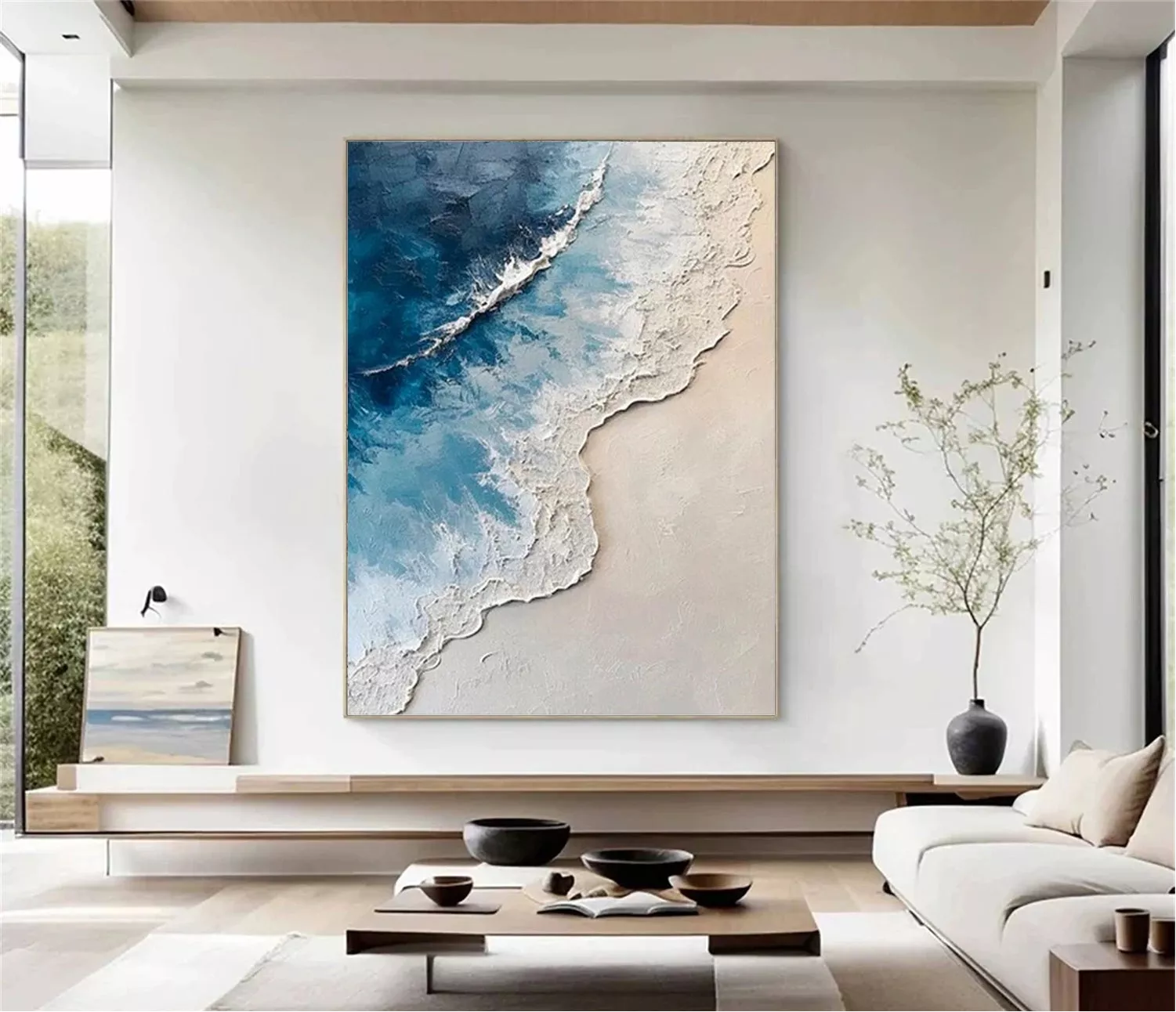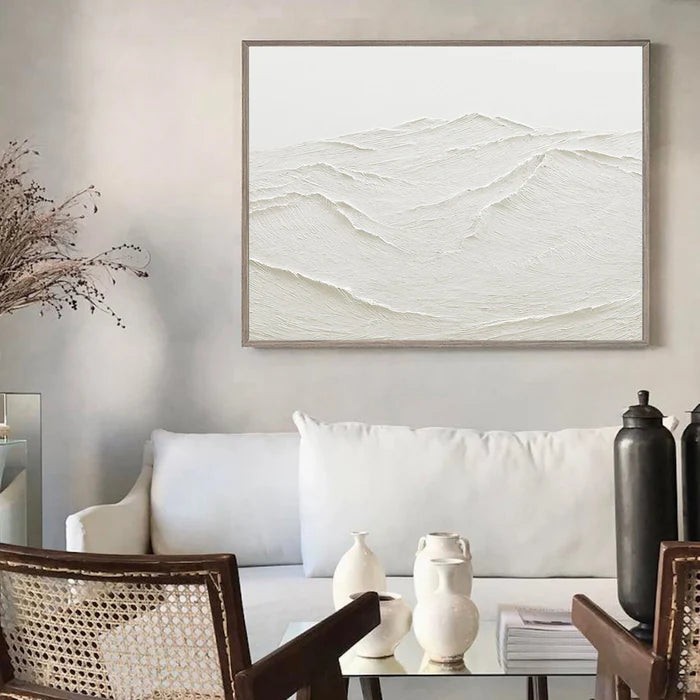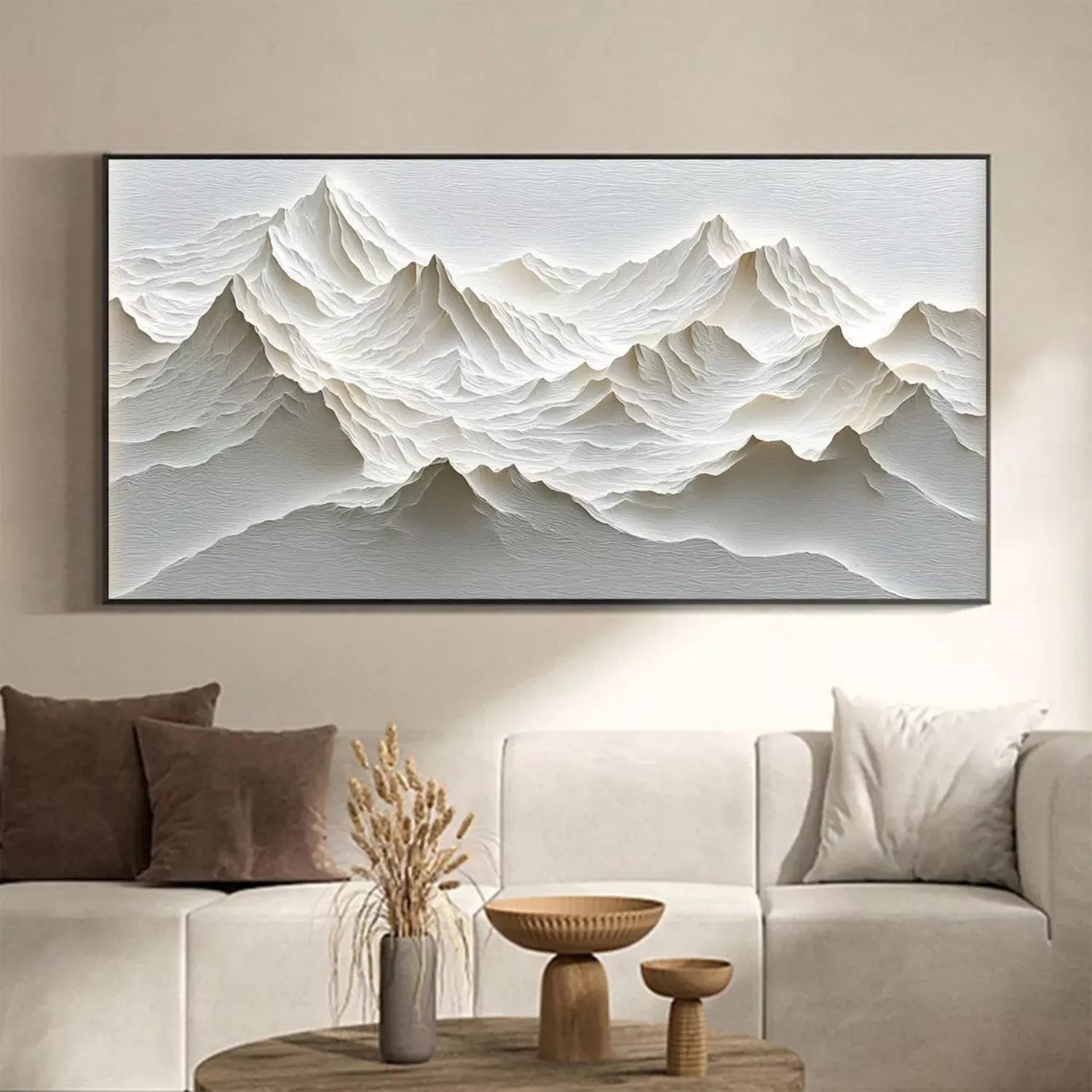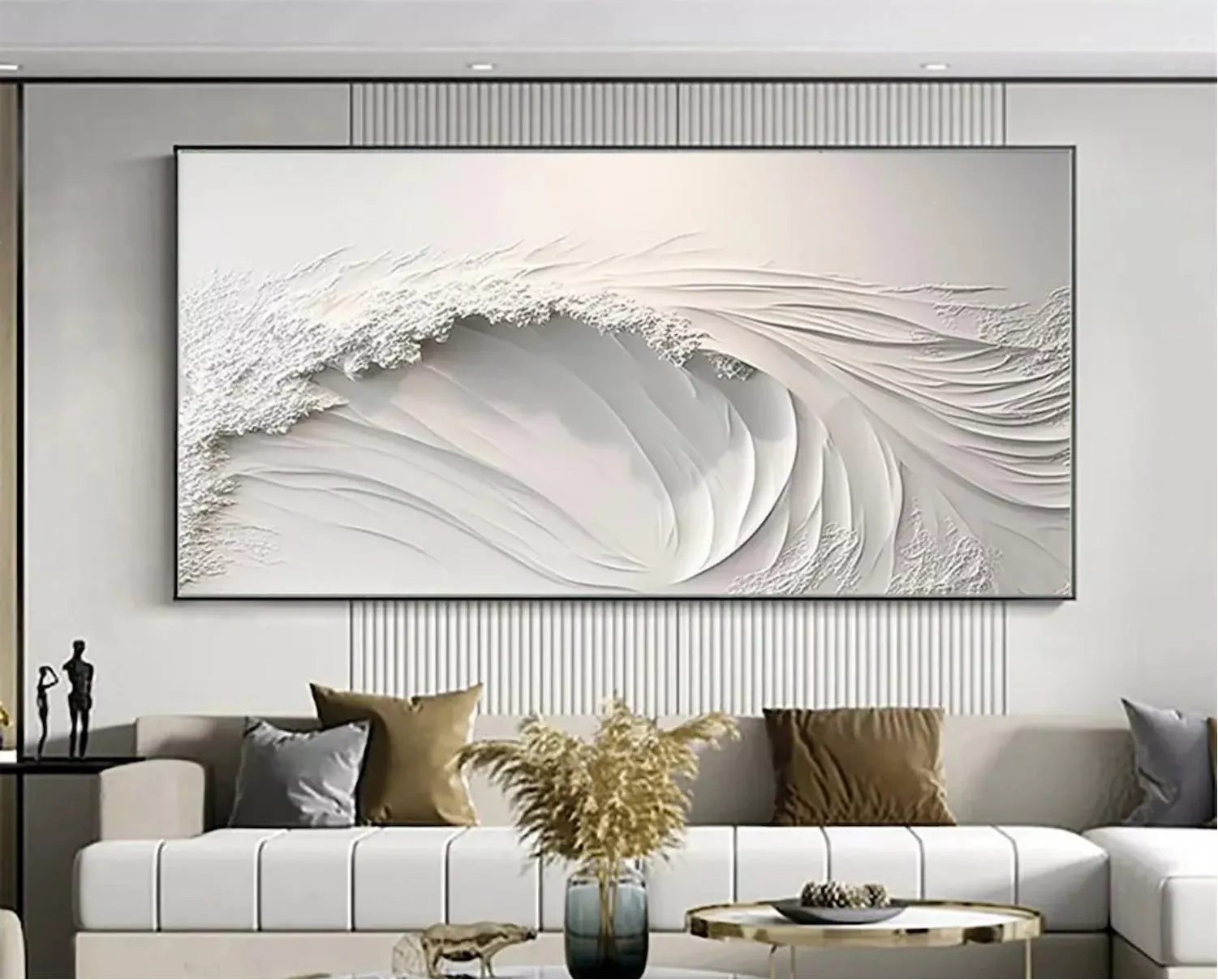
The Art of the Sea: A Guide to Abstract Ocean Painting
Have you ever stood at the shore, feeling the vast, untamed energy of the sea and wished you could capture that feeling forever? While a photograph can freeze a moment in time, it often misses the raw emotion, the sound of the waves, and the salt-kissed air.
This is where the power of an abstract ocean painting truly shines. It’s not about depicting every wave and cloud with precision; it’s about translating the very soul of the ocean onto canvas. This art form invites us to experience the sea through emotion and movement, using color, texture, and form to evoke memories and feelings that are as deep and personal as the ocean itself.
In this guide, we will dive into the world of abstract painting ocean, exploring its meaning, its undeniable allure, and even how you can create your own. Whether you are an aspiring artist or an art lover looking for the perfect piece, understanding this captivating style will change how you see the sea.
I. What Is Abstract Ocean Painting?
So, what exactly is an abstract ocean painting? At its core, it is an artistic interpretation rather than a literal representation. Forget perfect horizons and detailed sailboats; a true ocean abstract painting seeks to communicate the ocean's essence—its power, its tranquility, its mystery, and its rhythm. It uses the fundamental elements of art to create a sensory experience that resonates on a deeper, almost primal level.
When you look at a piece of abstract painting of ocean, you are engaging with a visual language built on:
Color: The palette is the first clue. An artist might use serene aquas and soft teals to convey a calm, tropical lagoon, or employ stormy navys, deep greys, and flashes of white to depict a tempestuous sea. Sometimes, a surprising splash of sunset orange or twilight purple can suggest the time of day or a specific mood, moving beyond pure realism.
Texture: This is perhaps the most tactile element. Artists often use thick applications of paint, a technique called impasto, to build up a textured surface that you can almost feel. These raised peaks and valleys can mimic the frothy crash of a wave, the gentle ripple of a tidal pool, or the rugged power of a cliff face against the water. A smooth, watery wash, on the other hand, might represent a still, reflective surface at dawn.
Movement and Form: The brushstrokes themselves tell a story of motion. Dynamic, sweeping strokes can convey the relentless energy of the surf, while softer, more horizontal forms might suggest a slow, rolling tide or a peaceful, endless horizon. The beauty of abstract ocean paintings lies in their ability to make you feel the movement without explicitly showing it.
In essence, an abstract painting ocean is a conversation between the artist and the viewer, mediated by the timeless muse of the sea. It’s about what you feel when you gaze upon it, making each piece a uniquely personal journey.
II. The Allure of Abstract Ocean Painting
Why does this style hold such a powerful and enduring appeal? The allure of an abstract ocean painting is multifaceted, touching on our psychology, our connection to nature, and our desire for meaningful decor.
First, there is a profound psychological connection. The ocean is a universal symbol of both calm and power. In our fast-paced, modern lives, a serene ocean abstract painting can act as a visual anchor, bringing a sense of peace and tranquility to a living room or bedroom. It offers a window to a slower, more elemental world. Conversely, a dramatic and powerful abstract painting of ocean can inject energy and dynamism into a space, serving as a constant reminder of nature’s raw force and our own inner strength.
Secondly, these works are incredibly versatile in interior design. Unlike a traditional seascape that might dictate a specific "beachy" theme, an abstract ocean painting can seamlessly blend into a variety of aesthetics. A minimalist piece with soft blues and gentle gradients can enhance a modern, Scandinavian-inspired room. A bold, highly textured work can become the stunning focal point of a contemporary loft. A piece with sandy neutrals and weathered textures can complement a rustic or coastal farmhouse style. This chameleon-like quality makes finding the right abstract ocean paintings for your home an exciting and personalized endeavor.
Ultimately, the true allure is in the personal connection. Because these paintings are open to interpretation, they become a mirror for our own emotions and memories. The same abstract painting ocean might remind one person of a childhood summer by the shore and another of a profound, solitary moment of reflection. This emotional resonance is what transforms a beautiful decorative object into a cherished piece of personal history.
III. How to Paint an Abstract Ocean Scene: A Beginner's Guide
Feeling inspired to create your own? The process of creating an abstract ocean painting is an exhilarating and intuitive journey. If you've ever wondered how to paint abstract ocean art, the key is to let go of perfection and embrace the process. Here is a simple beginner's guide to help you channel the sea onto your canvas.
1. Gather Your Inspiration and Materials.
Before you touch a brush, spend some time with your subject. Look at photos of the ocean, or better yet, if you can, sit by the water. Observe the colors, the way light plays on the surface, and the rhythm of the waves. For materials, you will need a canvas, acrylic or oil paints in a chosen palette (think blues, greens, white, and perhaps an accent color), a variety of brushes, and most importantly, a palette knife for creating texture.
2. Set Your Emotional intention.
Decide what feeling you want to convey. Are you painting a "Calm Cove" or a "Raging Storm"? Your intention will guide your color choices and brushwork. This is the foundational step in learning how to paint an abstract ocean scene that truly communicates.
3. Build Your Background and Layers.
Start by blocking in your main colors. Don’t blend them perfectly; let them mix and mingle on the canvas. Use a large brush or even a rag to apply washes of color, establishing the moody foundation of your abstract painting ocean.
4. Create Texture and Movement.
This is where the magic happens. This is the core answer to how to paint abstract ocean art with depth.
Waves and Foam: Use a palette knife to apply thick, white and light blue paint in sweeping, arcing motions. Don’t be afraid to build it up.
Currents and Depth: Use the edge of your knife or a thin brush to drag darker colors through lighter ones, suggesting underwater currents and depth.
Splatters and Spray: For a final touch of realism, dip a stiff brush in watered-down white paint and flick your wrist to create a fine spray of ocean mist.
Remember, there are no mistakes in abstraction. Each layer and texture adds to the story of your unique ocean abstract painting.
IV. Bringing the Ocean Home: Choosing Your Abstract Ocean Painting
Not everyone is an artist, but everyone can appreciate and own a beautiful piece of art. If you're looking to bring the ocean's magic into your space, selecting the right piece is key. Here’s how to choose an abstract ocean painting that will resonate with you and your home for years to come.
Start by considering the room’s atmosphere. For a bedroom or a meditation space where you seek calm, look for abstract ocean paintings with soft, horizontal compositions, gentle color transitions, and a more muted palette. For a living room or entryway where you want to make a statement, a bold, textured, and dynamic abstract painting of ocean can serve as a powerful focal point that sparks conversation.
Next, think about your existing decor. A modern minimalist home might be elevated by a large-scale abstract painting ocean with a limited color scheme and strong graphic forms. A more traditional or bohemian space might embrace a piece with richer, more complex colors and intricate textures. The goal is to find a piece that feels like a natural extension of your style.
Finally, and most importantly, trust your emotional response. When you look at a potential ocean abstract painting, how does it make you feel? Do you feel a sense of peace? Excitement? Wonder? The right piece will speak to you on an intuitive level. It should be a window to a feeling you want to cultivate in your home.
Conclusion: The Eternal Muse
The ocean, in all its majestic and mysterious glory, has been a timeless muse for centuries. Abstract ocean painting allows us to engage with this powerful force of nature in a deeply personal and modern way. It moves beyond the literal to capture the intangible—the emotion, the memory, the very spirit of the sea. Whether you are holding a brush and discovering how to paint an abstract ocean scene for the first time, or searching for that perfect piece to complete your sanctuary, this art form offers an endless well of inspiration. It reminds us that the sea is not just a place we visit, but a feeling we can carry with us always, immortalized in the beautiful, evocative strokes of an abstract painting ocean.









